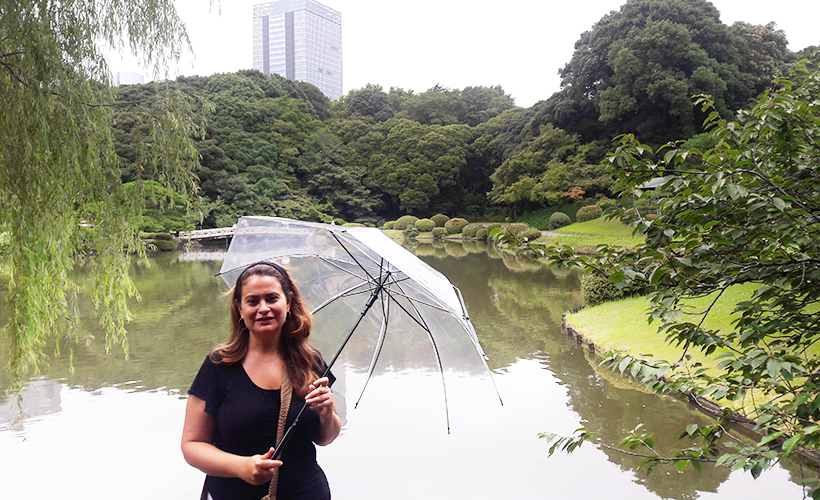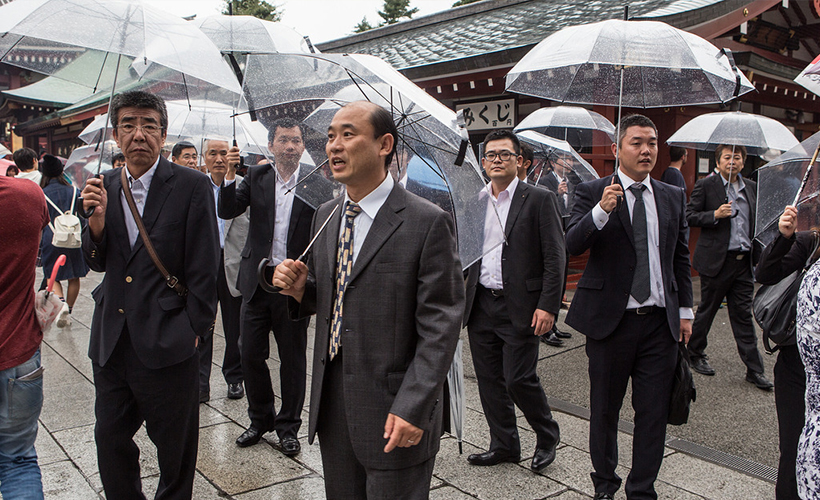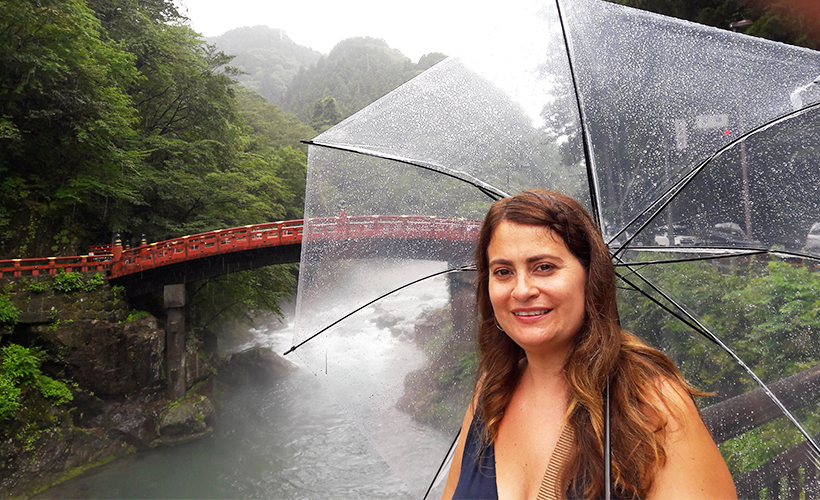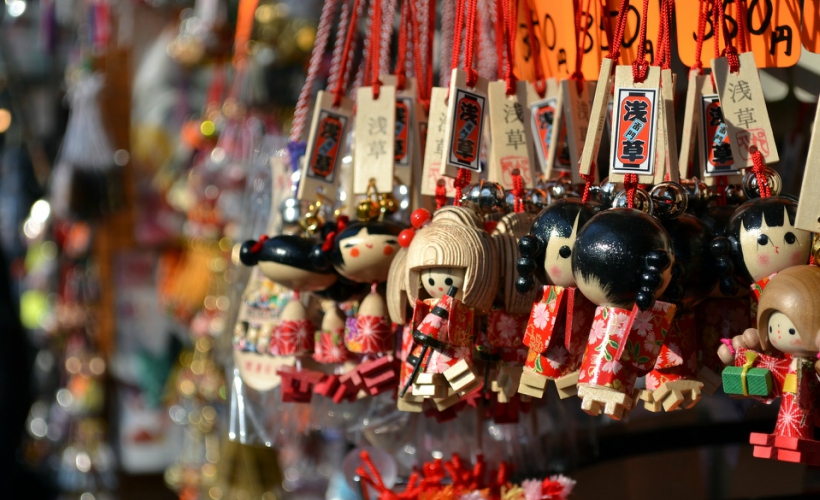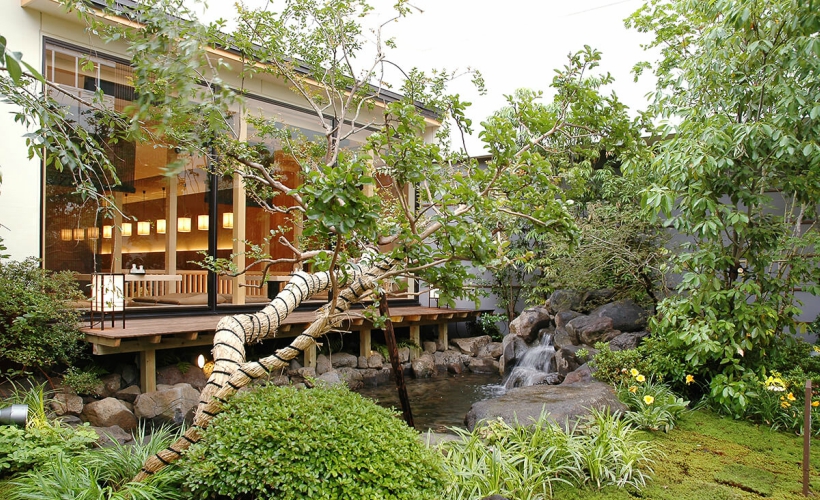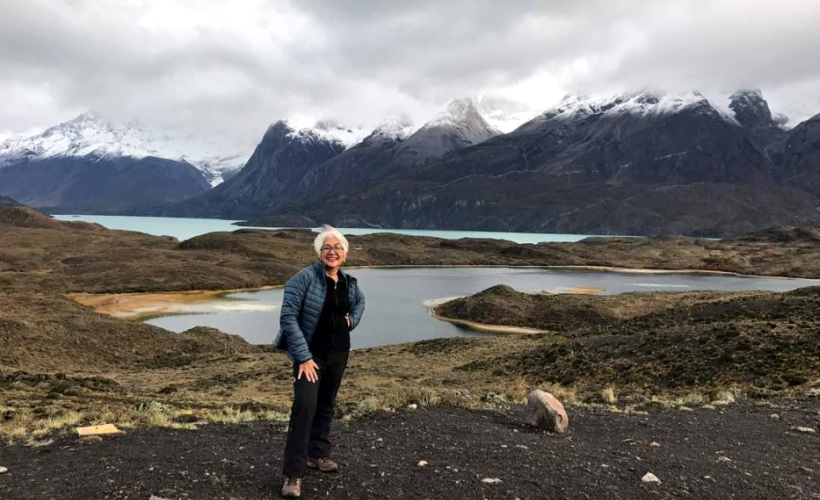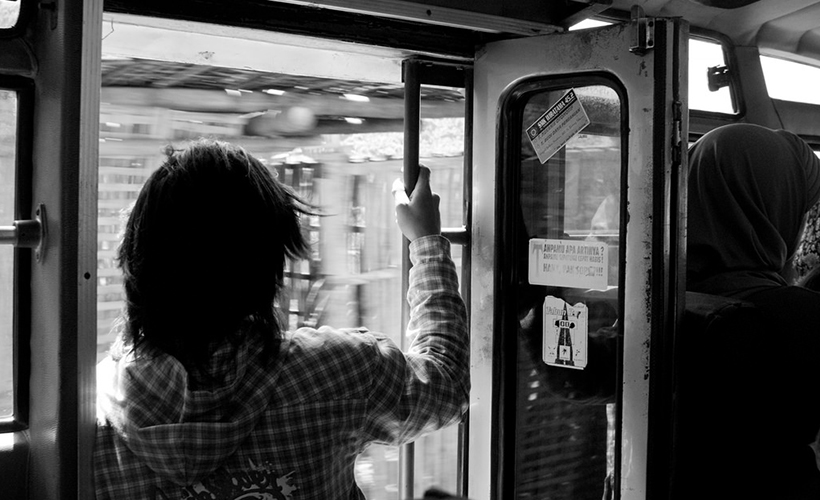It’s my first visit to Japan and I was a little nervous. Will I be claustrophobic in the micro-sized hotels? Will I be able to communicate? And most importantly, did I leave enough room in my suitcase for souvenirs?
When visiting Japan this summer, I opted against taking my usual bright turquoise travel umbrella, knowing the forecast called for extreme heat and little rain. However, when I got there and right up until the day I left, a gentle mist and occasional deluge followed me around the country, forcing me to look for local options to shield from the rain.
I’ve lived in Asia before and find that everywhere I go, people stare at me. Some even smell my skin, curious about my milky complexion. But in Japan, no one gave me a second look. I became, surprisingly, as invisible as the umbrellas that cover Tokyo’s streets.
Over 127 million people live in Japan, making the Japanese the largest purchasers of umbrellas in the world. With recent changes in their climate, and an increase in torrential downpours, the sales have increased even more. Millions of people are walking around with umbrellas, but the most popular choice is clear – literally. The vast majority of people have opted for a transparent plastic umbrella that seems to fade into the city landscape.
While most things in Japan are compact and space-saving, the Japanese utilise the full-fledged Frank Sinatra Singing in the Rain umbrella. It is the one item that can be seen everywhere in Japan, especially during the rainy season, and yet, by the nature of its design, it is essentially invisible. They are available for purchase at just about every corner and kiosk at the cost of a throw-away item; and their sturdiness and superior craftsmanship make them durable enough for many uses.
On my first walk in Shinjuku, I noticed that everyone seemed to be carry one – these umbrellas were as ubiquitous as iPhones. Hordes of people all casually sauntering around, carrying an innocuous, practical umbrella that, together, looked like a massive greenhouse covering the entire city.
So I went to the popular Lawson convenience store and picked up one for a few hundred Yen. The second I held it in my hand, I felt a magical connection to Japan’s culture. It was as if by having this item, I was not only protected from the rain, but also able to blend seamlessly into the crowd – a phenomenon I rarely feel when travelling in such a different land. Its invisibility allowed me to blend in.
I was also surprised at how many different people used them. Men in business suits, elders gently holding the handles while taking the train, women with white masks over their faces carrying their umbrella as protective shields, and children quietly twirling them around in the city haze. And there’s me, the American tourist, who never let that parasol leave my side. It was the ultimate accessory.
I would have assumed that a country noted for its colourful anime and geisha, would have been filled with colourful options, but the clear umbrella made perfect sense. It’s extremely affordable, most costing just a few USD, and there were no fashion faux pas. The colour, or lack thereof, blends with everything from business suits to vibrant kimonos. There’s no hesitation, no question over which one to get – you simply grab one and go on your way.
The biggest problem, however, is their durability. They’re cheap, but not cheaply made. While they are made for one-time emergency uses, they often last longer than intended. Young activists even created Shibukasas, named after Shibuya and kasa (umbrella), where people can reuse or recycle these umbrellas when need be.
I was in Japan for 10 days and used my umbrella the entire time. It became an extension of my wardrobe and I enjoyed how, by simply holding it, I felt closer to the way of life somehow.
By the end of my trip, my suitcase was packed with a myriad gifts and my umbrella was still standing strong. I even inherited a colourful handle holder so that I can easily find mine among similar ones in restaurants and hotels.
Then, it hit me. I find that looking at this simple object is an association with all the fun I had on my trip: Walking through the peaceful gardens, shielding me during downpours in ancient shrines and placed neatly on a hook during shinkansen rides to other cities. I just couldn’t leave it behind.
So I take it to the airport with me and ask if I can check it in as luggage. The friendly woman behind the counter with the short, blunt haircut offers a big smile. “Of course,” she says, grabbing my clear umbrella and placing a thick white luggage label around it. It now sits safely in a corner in my closet awaiting its next encounter with real rain, when I can take it out, spin it around and remember a magical trip where I walked freely and dare I say, felt beautifully invisible.
Read our last Travel Tale:
An Unconventional Family Retreat To Chiang Mai, Thailand
Here’s your chance to get published on Zafigo! We want your most interesting Travel Tales, from memorable adventures to heartwarming encounters, scrumptious local food to surreal experiences, and everything in between.
They can be in any form and length –short stories, top tips, diary entries, even poems and videos. Zafigo is read by women travellers the world over, so your stories will be shared to all corners of the globe.
Email your stories to editor@zafigo.com with the subject line ‘Travel Tales’. Include your profile photo and contact details. Published stories will receive a token sum.


